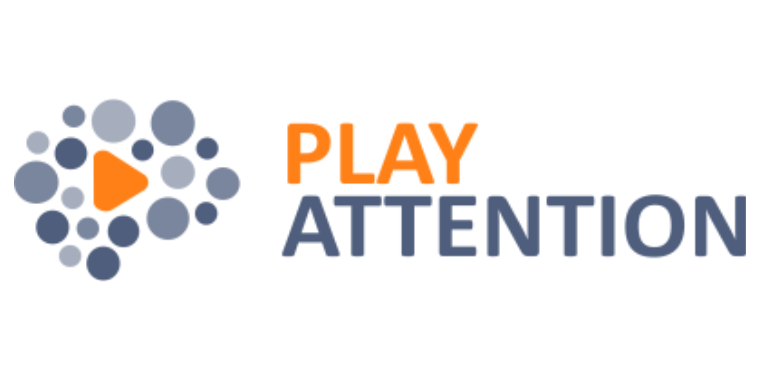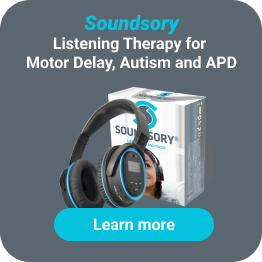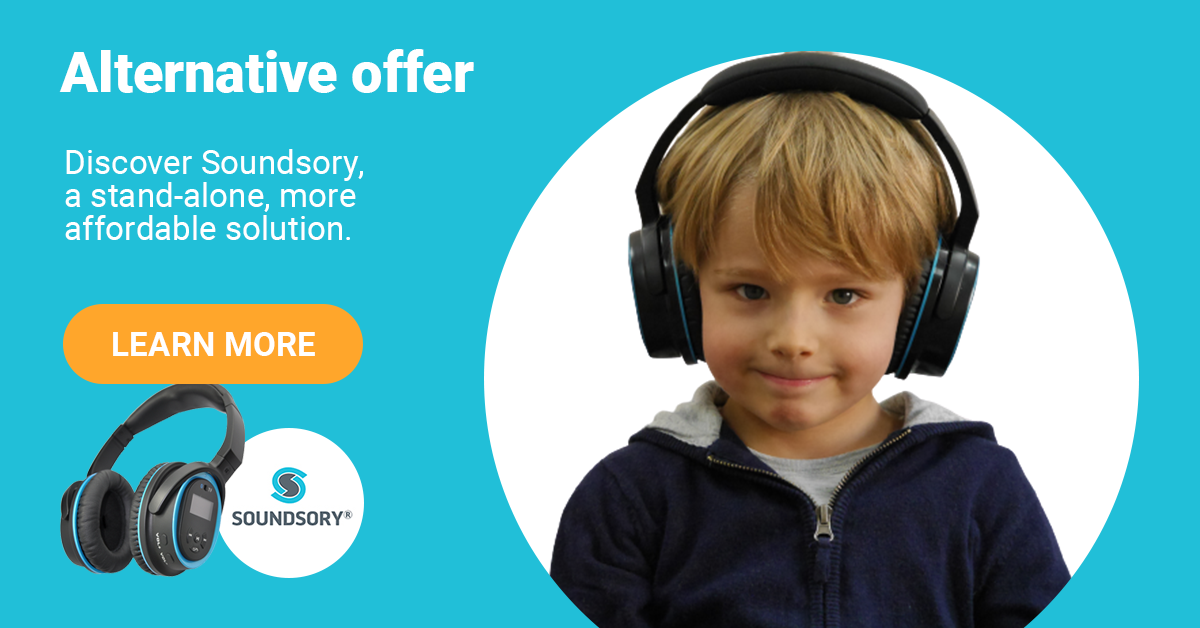What is the Play Attention program?
 Valérie Leroux - May 21, 2024
Valérie Leroux - May 21, 2024 
What is Play Attention?
The Play Attention program is a comprehensive cognitive training plan aiming at boosting concentration, especially for individuals who struggle with attention-related issues such as ADHD.
With a strong emphasis on cognitive training, Play Attention includes aspects of neurofeedback, cognitive enhancement and immersive engagement. By utilizing the power of neurofeedback, participants gain insights into their brainwave patterns, allowing them to better control their attention and strengthen their concentration skills.
Summary of Play Attention: An ADHD-focused program
Play Attention is a comprehensive cognitive training program designed to enhance concentration, especially for individuals dealing with attention-related challenges such as ADHD. The program integrates techniques like neurofeedback, cognitive enhancement and immersive engagement. By utilizing neurofeedback, it offers insights into brainwave patterns, aiding in attention regulation. The program finds utility across different environments, from educational to clinical settings. Personalization is achievable through assessment, tailoring the program to individual requirements. SOUNDSORY® and FORBRAIN® offer distinct approaches to addressing attention and cognitive challenges and can be used as complementary programs. Play Attention focuses on cognitive training and neurofeedback, SOUNDSORY® emphasizes auditory stimulation and rhythm, and FORBRAIN® targets voice and auditory processing. Each program offers unique techniques and delivery methods to enhance attention, sensory processing and cognitive skills.
Pros

✅ Interactive and engaging
✅ Provides real-time feedback on brainwave activity
Cons



What is the Play Attention program?
The Play Attention program is a comprehensive attention-training neurofeedback system that aims to help individuals with ADHD improve their cognitive development, self-regulation and behavior. The program uses NASA-inspired brain monitoring technology and provides feedback in a game-like environment. The Play Attention program is available in different versions, including an adult program and a home program. The program is designed to strengthen executive function and develop core cognitive skills.
Who can benefit from the Play Attention program?
The Play Attention program is designed to offer potential benefits to those who are seeking to improve their attention, focus and cognitive skills. While the program has gained recognition for its application in addressing attention-related challenges like Attention-Deficit/Hyperactivity Disorder (ADHD), it can be beneficial for a broader range of people as well. Here are some groups of individuals who may benefit from the Play Attention program:
1. Individuals with ADHD: The Play Attention program is often used as an intervention for individuals diagnosed with ADHD. It aims to help them manage their attention difficulties, impulsivity and hyperactivity by providing cognitive training and strategies for self-regulation.
2. Children and Adolescents: The program is particularly relevant for children and adolescents who are developing their cognitive skills. It can help improve their focus, concentration and attention span, which are important for academic and social success.
3. Students: Students at various educational levels can benefit from the Play Attention program. It can assist them in staying attentive during classes, completing assignments, and studying effectively.
4. Adults: Adults seeking to enhance their cognitive skills, focus and productivity may also find value in the Play Attention program, especially if they face challenges with attention or are looking to optimize their mental performance.
5. Professionals: Professionals in demanding careers that require sustained attention and multitasking, such as business professionals, healthcare providers and educators, may benefit from the program’s focus training to improve their performance and efficiency.
6. Individuals with Cognitive Challenges: Beyond ADHD, individuals with other cognitive challenges, such as learning disabilities or mild cognitive impairment, may find the Play Attention program helpful in strengthening their cognitive abilities.
7. Athletes and Performers: Athletes, musicians, actors and other performers who need to maintain high levels of focus and concentration can potentially benefit from the program’s cognitive training techniques.
Seniors: Older adults looking to maintain or enhance their cognitive functions and mental acuity may find the Play Attention program useful as a cognitive workout.
Where is the Play Attention program coming from?
Freer Logic, Inc., headquartered in North Carolina, USA, is a Delaware corporation specializing in B2B neurotechnology solutions for monitoring and training. Founded by neurotechnology pioneer Peter Freer, MSEd, the company drew inspiration from NASA’s utilization of neurotech for astronaut training. By integrating cognitive skill training and behavior shaping, Freer Logic introduced the Play Attention neurocognitive training system, patented as the first of its kind for ADHD individuals. Established in 1994 after extensive research and development, Play Attention has evolved into an educational neuroscience program for students with ADHD.
Which equipment is needed for Play Attention?
Functioning as a brain training computer software, the Play Attention program provides a range of games and activities intended to refine the user’s attention abilities.
The equipment required for Play Attention depends on the package you decide to acquire.
The basic package ($995) includes:
· A computer running on Windows 10 or macOS Sierra or a newer version
· The Play Attention software
· A BodyWave® armband
· An interface box
· A Bluetooth dongle
Moreover, the advanced package incorporates:
· Behavior shaping charts
· Comprehensive materials for managing behavior
· Technical and educational assistance
· An initiation tutorial conducted over the phone
· An interactive manual featuring audio and video elements
· An unrestricted user license
The Play Attention armband serves as a wearable device that monitors brain activity using EEG sensors. The interface box facilitates linking the armband with the computer. The Bluetooth dongle enables wireless communication between the armband and the computer.
Utilized to monitor progress and offer affirmative reinforcement, the behavior shaping charts play a central role. The materials for managing behavior aid the user in formulating strategies for handling their attention skills.
What is the time commitment typically required for the Play Attention program?
The time commitment typically required for the Play Attention program is 20-30 minutes per day, 5 days a week. However, the program can be customized to fit individual needs. Some people may need to spend more time on the program, while others may need less time.
The Play Attention program is divided into 12 weeks of training. Each week, there are 5 lessons. Each lesson takes about 20-30 minutes to complete. The lessons are designed to be challenging and engaging, so users are less likely to get bored.
In addition to the lessons, there are also a variety of activities that users can do to practice their attention skills. These activities can be done at home or in school.
The Play Attention program is a self-paced program, so users can progress at their own pace. However, it is important to be consistent with the program in order to see results.
Where can the Play Attention program be practiced?
The Play Attention program can be practiced in a variety of settings, including:
· At home
· In a school
· In a clinic
· In a doctor’s office
· In a therapist’s office
Here are some of the benefits of practicing the Play Attention program in different settings:
· At home: You can practice the program at your own pace and in your own time. This can be helpful if you have a busy schedule or if you prefer to practice in a familiar environment.
· In a school: The program can be used as part of a school’s special education program or as part of a regular classroom. This can be helpful if you are looking for a way to improve your child’s attention skills in a structured setting.
· In a clinic: The program can be used as part of a treatment plan for ADHD or other focus and attention challenges. This can be helpful if you are working with a therapist or other healthcare professional to improve your attention skills.
· In a doctor’s office: The program can be used as part of a diagnostic evaluation for ADHD or other focus and attention challenges. This can be helpful if you are not sure if you have ADHD or if you are looking for a way to improve your attention skills.
Can the Play Attention program be personalized?
Yes, the Play Attention program can be personalized to fit individual needs. This is done through a process called assessment. The assessment is conducted by a Play Attention coach and it includes a variety of measures, such as:
· A clinical interview
· A neuropsychological assessment
· A behavioral assessment
The assessment results are used to create a personalized training plan. The training plan includes the specific games and activities that the individual will need to complete, as well as the amount of time they will need to spend on the program.
In addition to the assessment, the Play Attention coach will also work with the individual to develop strategies for managing their attention skills. These strategies may include things like setting goals, breaking down tasks into smaller steps and taking breaks.
How much does Play Attention cost?
The cost of Play Attention varies depending on the package selected. The basic package costs $995. This package includes the brain training software, the armband, and the interface box.
The professional package costs $2,495. This package includes everything in the basic package, plus the behavior shaping charts, all behavioral management materials, free and unlimited technical and educational support, a full introductory tutorial over the phone, an interactive manual with audio and video clips, and an unlimited user-license.
You can also purchase the Play Attention program through a licensed provider. The cost will vary depending on the provider.
What are the alternatives or complementary approaches to Play Attention?
There are a number of alternative or complementary approaches to Play Attention that can be used to improve attention skills. These approaches include:
SOUNDSORY®
SOUNDSORY® is a program that utilizes specialized activities and music centered around rhythm to stimulate the development of the brain. It consists of 50 exercises with the goal of fostering effective neural connections. The program’s exercises emphasize the integration of basic reflexes, control of timing and rhythm, and improvement of balance. As rhythm greatly impacts cognitive and motor abilities, SOUNDSORY® is structured to enhance the perception of rhythm through music. The chosen music is intentionally designed to highlight rhythm, thereby encouraging the brain’s adaptability and focus.
In essence, SOUNDSORY® aids in integrating proper basic reflexes through a series of repeated activities. Subsequently, by means of repeating bodily movements alongside music, it facilitates the assimilation of rhythm and coordination.
-
FORBRAIN®
FORBRAIN® follows the principles of the Tomatis® Method, but it is intended for individual users and can be utilized in a home setting. The FORBRAIN® headset introduces pioneering elements like a dynamic filter, microphone and bone conduction. Through the direct transmission of the user’s voice via bone structure, it enhances distinct vocal patterns and amplifies the voice while eliminating surrounding noise. This distinctive design enhances the auditory feedback cycle by employing bone conduction to convey sound, rather than the conventional methods of ear or air conduction. The recommended timeframe for engaging with the FORBRAIN® program spans six weeks, entailing daily sessions lasting 20 minutes each.
Here is an overview of the comparison between these 3 programs:
| Aspect | Play Attention® | SOUNDSORY® | FORBRAIN® |
| Focus | Attention improvement | Auditory stimulation, sensory processing, attention enhancement | Voice and auditory processing enhancement |
| Techniques | Cognitive training, neurofeedback | Music, rhythm, movement exercises, auditory stimulation | Bone conduction, auditory stimulation |
| Delivery | Computer-based brain training software | Unique headset design | Unique headset design |
| Practitioners | Guided program, may involve educators or therapists | Self-guided program | Self-guided program |
| Personalization | Individualized training | Structured program, less individual customization | Standardized program |
| Application | Often used in educational and clinical settings | Home use, suitable for daily routines | Home use, daily sessions |
| Target Audience | ADHD, attention challenges | Sensory processing issues, attention difficulties | Voice and auditory processing enhancement |
| Integration with Other Therapies | May be part of a comprehensive approach | Primarily a standalone program but can be used as a complement | Primarily a standalone program but can be used as a complement |
| Overall Approach | Attention improvement | Auditory stimulation, sensory processing, attention enhancement | Voice and auditory processing enhancement |
| Independence and Convenience | May require guidance initially | Can be practiced independently at home | Can be practiced independently at home |
Who delivers Play Attention?
Play Attention is delivered by a variety of providers, including:
- Licensed Play Attention coaches
- Schools
- Clinics
- Doctor’s offices
- Therapist’s offices
The Play Attention coach is a healthcare professional who is trained to use the Play Attention program. They will assess the individual’s needs and develop a personalized training plan. They will also provide support and guidance throughout the program.
Schools may use the Play Attention program as part of their special education program or as part of a regular classroom. The program can be used to help students improve their attention skills and academic performance.
Clinics may use the Play Attention program as part of a treatment plan for ADHD or other focus and attention challenges. The program can be used to help individuals improve their attention skills and reduce their symptoms.
Doctor’s offices and therapist’s offices may use the Play Attention program as part of a diagnostic evaluation for ADHD or other focus and attention challenges. The program can be used to help individuals determine if they have ADHD or other focus and attention challenges.
Conclusion
The Play Attention program is designed to help individuals who face difficulties in maintaining their focus, particularly those with conditions like ADHD. The program provides a comprehensive approach to enhancing concentration, employing techniques such as neurofeedback, cognitive improvement and immersive engagement. By utilizing neurofeedback, participants gain insights into their brainwave patterns, which assists them in managing their attention better and improving their ability to concentrate.
It can be applied in different settings, such as schools and clinics, to aid in better learning and performance. The program’s adaptability allows it to be tailored to individual needs through an assessment process, creating a personalized plan.
However, it’s important to note that there is still a need for more scientific evidence to confirm its full benefits. Additionally, Play Attention is not the only solution available to improve focus. Other programs, like SOUNDSORY® and FORBRAIN®, offer different methods to enhance focus and learning.
References
- Steiner NJ, Frenette EC, Rene KM, Brennan RT, Perrin EC. Neurofeedback and cognitive attention training for children with attention-deficit hyperactivity disorder in schools. J Dev Behav Pediatr. 2014;35(1):18-27. doi:10.1097/DBP.0000000000000009




